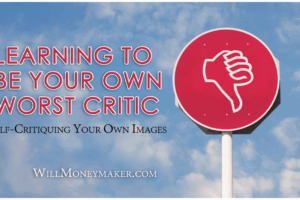As photographers, we pour our hearts into our work, often searching for the next opportunity to showcase our art. But what happens when that opportunity comes with a price tag—literally?
Lately, I’ve been wrestling with a growing trend where photographers are asked to pay to submit their photos to contests or books. It’s been on my mind, and frankly, it’s troubling. Let’s explore why this practice is gaining traction and whether it’s truly fair to the artists who create the work.
The Price of Exposure: More Than Just a Fee
Let’s start with an example that’s been bugging me. I admire this photography book series, curated by a photographer I respect. He’s offering to submit photos for consideration in his next book. The catch? You have to pay $30 to submit your photos. To be clear, whether or not your photos are selected, you receive a copy of the book. Essentially, you’re paying for the book, with the submission fee included as part of the package.
But here’s where it gets interesting—and a little murky. You can submit additional photos for $15 each to increase your chances of featuring your work. Suddenly, what seemed like a straightforward book purchase turned into a gamble. You’re not just buying a book; you’re paying for the possibility of selecting your work. And if you’re like many photographers, that possibility is tempting enough to make you reach for your wallet.
The Contest Conundrum
Then there are the photography contests. These often come with their own set of rules and fees. You pay to enter, typically with the promise of being judged in various categories. If your photo wins, you might get a sticker or digital badge to display on your website—a sign that you’re the best in your category. But here’s the thing: you have to pay for that chance. It’s not a guaranteed recognition; it’s a chance at recognition. And while the idea of having a winning logo on your website might sound appealing, is it worth the price?
The Ethics of Paying for Promotion
So why does this bother me? Because, at its core, this practice feels like it’s walking a fine line between supporting photographers and exploiting them. Sure, you’re getting a product—a book or a chance to win a contest—but the real issue lies in the fact that you’re also paying for exposure.
Many photographers, especially those just starting out, desperately seek exposure. The opportunity to be featured in a reputable book or to win a contest could be the big break they’ve been looking for. But when that opportunity comes with a price tag, it feels less like a genuine chance for success and more like a pay-to-play scheme.
The Financial Gamble
What’s more troubling is that this model can become a financial gamble for photographers. The more you submit, the more you pay. And while there’s a chance that your work could be selected, there’s also a chance that it won’t be. This can create a cycle where photographers keep submitting more and more, hoping that this time, their work will be chosen. But with each submission, the costs add up, and the only guaranteed outcome is that you’re out the submission fees.
In this sense, the practice benefits the organizers more than the artists. They receive a steady income stream from submission fees, while the photographers bear the financial risk. While the organizers might argue that the fee is justified because it covers the cost of producing the book or running the contest, it’s worth questioning whether the model is truly fair to the participants.
A Question of Fairness
Another aspect to consider is the fairness of this practice. Does it create an uneven playing field? It could be argued that it does. Photographers with more disposable income can afford to submit multiple entries, increasing their chances of being selected. Meanwhile, those with tighter budgets might only be able to afford one or two submissions, putting them at a potential disadvantage, regardless of the quality of their work.
This raises the question: should the ability to pay to determine who gets the chance to be featured or win? In an ideal world, selection would be based solely on the quality of the work, not on how much the artist can afford to spend on submission fees.
Navigating the Landscape: Advice for Photographers
So, what’s the alternative? Should photographers avoid these opportunities altogether? Not necessarily. But it’s important to approach these situations with a critical eye. Before you pay to submit your work, consider the following:
• Reputation: Is the book or contest reputable? Do previous editions or winners have a track record of helping photographers gain recognition?
• Cost vs. Benefit: Does the potential benefit of being featured outweigh the cost of submission? Consider whether the exposure is truly worth the price.
• Transparency: Are the terms and conditions clear? Do you understand what you’re paying for and what you’re getting in return?If you decide to participate, set a budget for how much you will spend on submission fees and stick to it. Don’t get caught up in the temptation to submit more and more, hoping for a better chance. Instead, focus on creating high-quality work that stands out on its merits.
The Bottom Line
The decision to pay for exposure is a personal one. But it’s crucial to be aware of the implications. While paying to submit your work might seem like a shortcut to success, it’s worth questioning whether it’s a path you want to take. Photography should be about creativity, expression, and sharing your vision with the world—not about who can afford to pay the most to get noticed.
As photographers, we need to value our work and ourselves. After all, a photograph's true worth isn’t measured in dollars but in the stories it tells and the emotions it evokes. Let’s not lose sight of that in the pursuit of exposure.
Now, go and enjoy the beauty of God’s creation through your lens.




